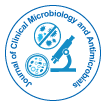

Commentary - (2025)Volume 9, Issue 1
Nanotechnology has emerged as a transformative force in modern medicine, particularly in the context of drug delivery systems, offering promising solutions to combat the growing threat of antimicrobial resistance (AMR). Traditional antimicrobial therapies often suffer from issues such as poor solubility, instability, rapid degradation, nonspecific distribution, and suboptimal bioavailability. These limitations contribute to the inefficient eradication of pathogens and often lead to the emergence of drug-resistant strains. Nanotechnology-based Drug Delivery Systems (NDDS) have revolutionized the way antimicrobial agents are formulated and delivered, enabling controlled and targeted release, improved pharmacokinetics, and enhanced therapeutic outcomes. This paradigm shift in antimicrobial therapy is especially crucial in an era where conventional antibiotics are losing their efficacy against multidrug-resistant (MDR) pathogens.
NDDS employs nanoparticles such as liposomes, solid lipid nanoparticles (SLNs), polymeric nanoparticles, dendrimers, and metallic nanoparticles (e.g., silver, gold, and zinc oxide) to encapsulate antimicrobial agents. These carriers protect the drug from enzymatic degradation, enhance penetration into microbial biofilms, and facilitate sustained drug release at the infection site. Liposomal formulations, for example, have demonstrated improved efficacy in treating intracellular bacterial infections by enhancing drug uptake into host cells. Similarly, metallic nanoparticles possess intrinsic antimicrobial properties and can disrupt bacterial cell walls, generate Reactive Oxygen Species (ROS), and interfere with DNA replication. These mechanisms not only enhance the antimicrobial effect but also reduce the likelihood of resistance development, as multiple cellular targets are affected simultaneously.
One of the most significant advantages of nanocarriers is their ability to bypass biological barriers and deliver drugs directly to infected tissues. Targeting moieties such as antibodies, peptides, and aptamers can be conjugated to the nanoparticle surface to achieve active targeting, minimizing off-target effects and toxicity. In addition, stimuli-responsive nanocarriers that release drugs in response to pH, temperature, or enzymatic activity provide site-specific delivery, reducing systemic exposure. This precision minimizes damage to commensal microbiota and preserves the host's immune function, addressing one of the major concerns of broad-spectrum antibiotics. In the context of AMR, nanotechnology offers innovative strategies to re-sensitize resistant pathogens to existing antibiotics. By co-delivering antibiotics with efflux pump inhibitors or β-lactamase inhibitors, nanocarriers can restore drug susceptibility. Furthermore, nanoparticles can be engineered to carry genetic materials such as small interfering RNA (siRNA) or CRISPR-Cas components that silence resistance genes, offering a new dimension to antimicrobial therapeutics. This multifunctionality positions NDDS as both a delivery platform and an active participant in the therapeutic process.
Despite the remarkable potential of NDDS, certain limitations must be acknowledged. Nanoparticle toxicity, especially in metallic forms, remains a concern, with studies indicating potential risks of oxidative stress, inflammation, and genotoxicity upon prolonged exposure. Additionally, the complexity and cost of nano-formulation development can hinder large-scale production and accessibility in low-resource settings. Nevertheless, advancements in green synthesis, surface functionalization, and scalable manufacturing techniques are gradually overcoming these obstacles.
In conclusion, nanotechnology-based drug delivery represents a paradigm shift in antimicrobial therapy, offering innovative solutions to address the escalating crisis of antimicrobial resistance. By enhancing drug solubility, stability, targeting efficiency, and multifunctionality, NDDS significantly improves therapeutic outcomes while reducing adverse effects and the potential for resistance development. As research in this domain advances, it is imperative to foster cross-sector collaborations, strengthen regulatory frameworks, and invest in translational research to ensure the clinical success of these technologies. For countries like Italy, which possess robust scientific infrastructure and a growing biotech sector, nanotechnology offers a promising pathway to revitalize antimicrobial strategies and safeguard public health in the post-antibiotic era.
Citation: Rocha MA (2025). Nanotechnology-Based Drug Delivery in Antimicrobial Therapy: A Paradigm Shift. J Clin Microbiol Antimicrob. 09:218.
Received: 03-Mar-2025, Manuscript No. JCMA-25-37629 ; Editor assigned: 06-Mar-2025, Pre QC No. JCMA-25-37629 (PQ); Reviewed: 20-Mar-2025, QC No. JCMA-25-37629 ; Revised: 27-Mar-2025, Manuscript No. JCMA-25-37629 (R); Published: 03-Apr-2025 , DOI: 10.35248/ JCMA.25.09.218
Copyright: 2025 Rocha MA. This is an open-access article distributed under the terms of the Creative Commons Attribution License, which permits unrestricted use, distribution, and reproduction in any medium, provided the original author and source are credited.